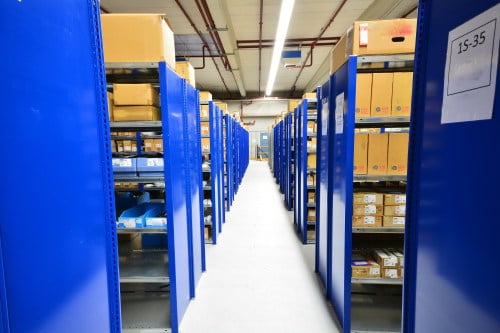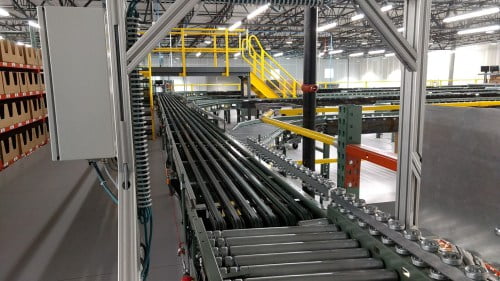Published November 29, 2016
Supply chain professionals know that running a distribution operation comes with several well known challenges. These challenges can range from having to constantly improve labor efficiency and order accuracy, leveling demand and temporary labor during peak times, determining scalability in future product and growth and reducing lead times as well as implementation risk. Knowing how to efficiently affront these challenges helps you create a competitive advantage; it also helps to know that there is a technology available that can help you tackle all these challenges. Whether you run a simple pick and pack operation or run a highly automated distribution center, the Put Wall can be used in eCommerce or retail operations and can be fairly economical. A brief overview follows:
A Put Wall is basically a shelving system (fluid or static) outfitted with put lights. Each shelf slot, or tote, represents an order for an eCommerce customer or part of a store order in a retail operation. Totes are picked upstream, mainly batch picked, at active locations (pick modules or racks) and conveyed to the put wall area. Ideally, when using totes, this would be done through conveyor, but if there is no automation, pick totes would be palletized and transported to the put wall. Goods are then scanned using the put to light system and sorted into the slots / totes assigned to the orders in the wave assigned to the Put Wall (yes, goods are touched twice). Once an order is complete, as in all put to light systems, the light associated with the compartment / tote / order lights up on the back side of the shelf where a packer retrieves the goods / totes and packs it at a station. The packer then sends the order down a conveyor and on to a shipping lane.
Below are the reasons why Put Walls work well and help you with the challenges mentioned above:
- RF scanners and lights are used to ensure accuracy. We all know this also depends on operator attention, but we also know it is an improved method over paper picking.
- Shelving can be very easily reconfigured, even if your conveyor cannot, so that your zones are adjusted to your changing demand / number of employees.
- Put zones can also be turned off / on and multiple lights can be used so that 1-4 operators can operate in the same zone.
- Shelf spacings can easily be adjusted to allow for larger / smaller product to be handled. This goes for hazardous, high value or other product that for other reasons needs to be segregated.
- A put wall area can be set up in several spots or in a large area which can shrink and grow as needed, making it easily scalable for future growth and peak demand.
- Cycle times with Put Walls are improved because of the ability to have multiple put walls operating simultaneously. It takes less time to get a large number of orders completed.
- Lastly, a Put Wall does not necessarily need conveyor or any type of specialized material handling equipment. At the very least, you will need static shelving, put lights and RF scanners to make it work.
In conclusion, be sure and give Put Walls reasonable consideration and research if you are in need of a strategy to help you deal with the peaks and valleys of your business, whether those peaks and valleys are in volume, cost, accuracy or cycle time.



